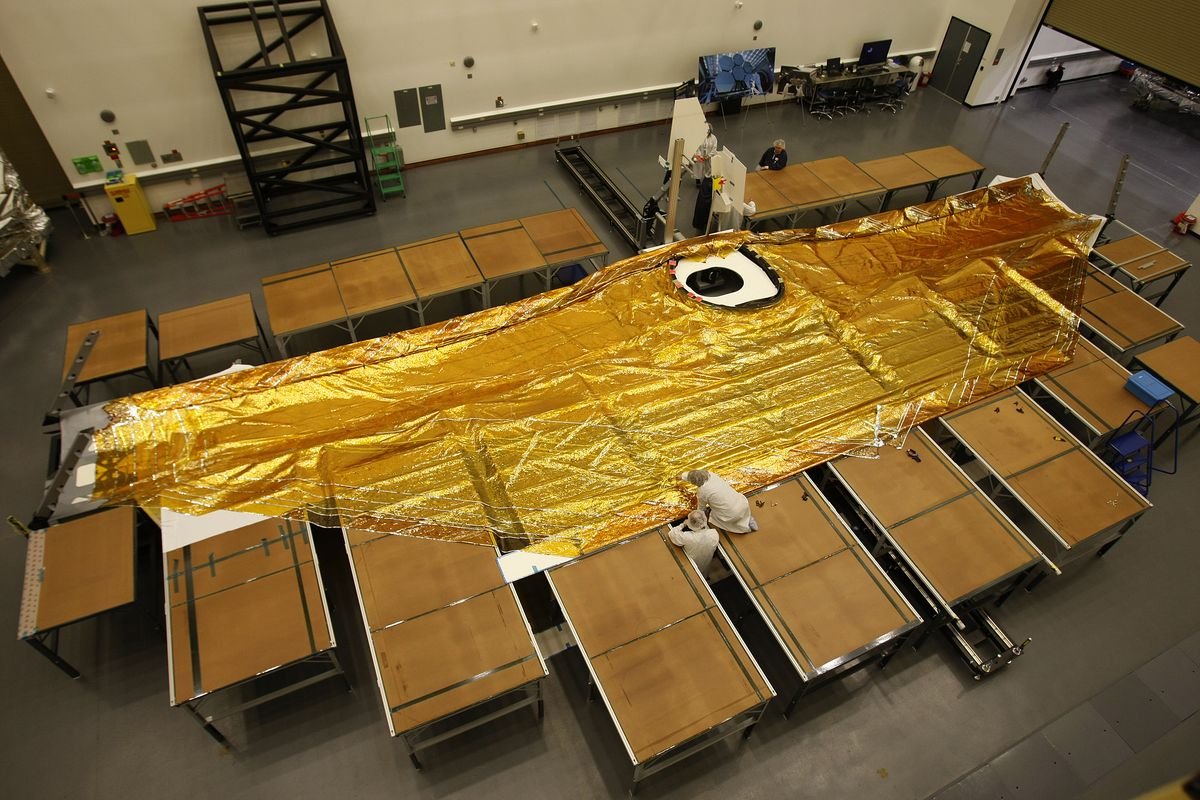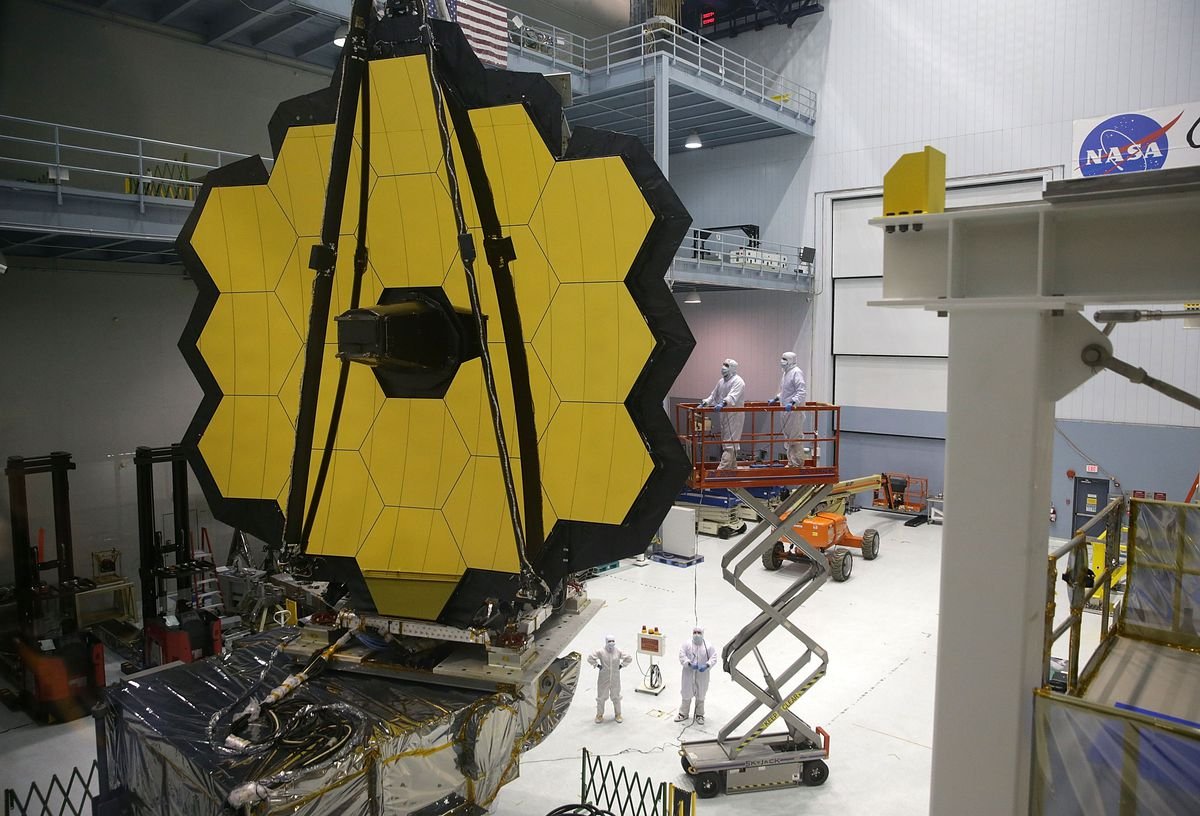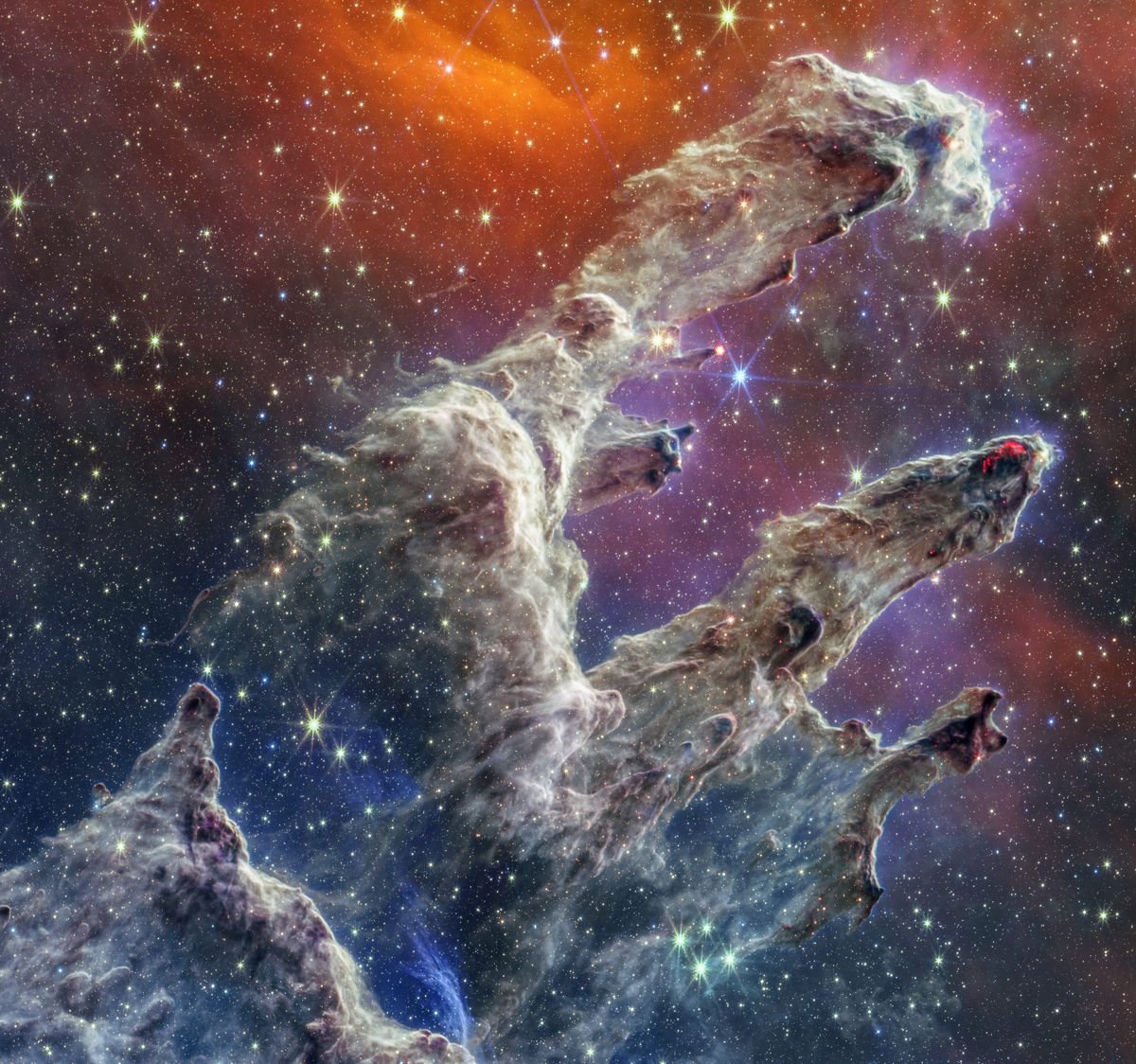Deep Sky is an IMAX adventure that aims to unite humanity
What do you do when you check into a hotel room? You immediately start sniffing around. You examine the sockets, pull the curtain aside, open the cupboard, check what’s in the minibar and make sure there’s nothing dirty in the bathroom. Only when you have a good idea of what is happening around you do you sit down and think about unpacking.
We – like those of us who exist as conscious, bodily beings in four dimensions – have yet to do that Real do this with great effectiveness in the cosmos. But lord knows we’re trying.
On December 25, 2021, NASA, with help from the European and Canadian space agencies, launched the James Webb Space Telescope, the most high-tech surveillance device in the Milky Way (at least as far as we know). If there is something better, JWST will find it.
Seasoned NASA nerds, or at least the ones who come to visit r/spaceporn, are already well aware of the incredible hurdles it took to get JWST off the ground and send back remarkable images. But for those who have been a bit more earthy: the new IMAX documentary Deep heaven is exactly what you need.
While the 40 minute film is already playing in nearly 30 North American planetariums, aerospace museums and science centers (plus two in Australia), Deep heaven will receive a full release at over 300 traditional IMAX theater locations for one week starting April 19. (This is tied to Earth Day, which is nice and all, but Deep heaven is actually the least Earth movie ever made. It’s about everything But Soil!)
The film, which reigns supreme, is directed by Nathaniel Kahn, who burst onto the documentary scene in 2003 with My Architecta biography in search of clues about his father, Louis Kahn. From a structure and screenplay perspective, Kahn doesn’t reinvent anything Deep heaven. He’s got interviews with talking heads (techies with varying degrees of media readiness), a celebrity narrator (in this case Michelle Williams), and computer-simulated visualizations to use as crutches (they’ve already been put to the test by NASA, so they look good.) The ace up his sleeve? The sheer size of this project itself, and the truly awe-inspiring images of JWST.
Photo: ESA/Webb, NASA & CSA, J. Lee and the PHANGS-JWST team; ESA/Hubble & NASA, R. Chandar
The story begins – as all stories do! – with the big bang. Williams’ gentle sounds provide a beautiful counterpoint to the chaotic origins of all existence (or, at least, all existence in this universe). We are then reminded that the simple act of looking up at the sky also means looking back in time. The light we see from a distant star does not shine nowseems to be the Than. And the deeper we look, the closer we come to the confusing birth of time and space itself.
This is basic high school science, but when the jerks who built JWST start talking about the implications of their work, the blood gets moving. We will never know the answers to life, the universe and everything unless we ask the questions as loudly as possible. And a huge telescope outside Earth’s atmosphere (outside Earth’s orbit!) is a necessary first step.
So you might think, Yes, flying a telescope into space, how difficult can that be? Rockets launch things into space all the time, right? When Kahn brings IMAX cameras to Northrop Grumman’s Redondo Beach, California production facilities and you see their construction, you begin to realize how complex this operation really was.
Humans look tiny next to the telescope, but it has to perform several Optimus Prime-like moves to fit onto a rocket’s delivery system. Then there’s the problem of keeping the equipment cool enough in the sun’s rays, so a thin heat shield must be built. To me, it looked thinner than the aluminum foil that covered last night’s meatloaf, and cracks in this material are often a bummer indeed. It took about 14 years to build and the cost – well, who cares what it costs? Northrup Grumman’s other appearance, production of weapons that kill civiliansalso costs a lot.
(Fun fact: The lens at JWST is made by Ball, the same company behind the mason jars your grandmother uses for raspberry preserves. This organization’s two core activities are designing the most complex lenses for groundbreaking space projects and creating ships for peach tea.)
After traveling through the Panama Canal and launching in French Guiana, Deep heaven introduces the terrifying concept of the ‘single-point failure’. To properly deploy JWST, no fewer than 344 highly detailed maneuvers were required. An of them didn’t go as planned, that was it. All that time, all that money, all those hopes and dreams would go straight down NASA’s gravity toilet. I don’t know about you, but I can barely stream a movie from my friend’s Plex without at least one hiccup, but somehow the team made it happen.

Photo: Allen J. Schaben/Los Angeles Times via Getty Images

Photo: Alex Wong/Getty Images
Once everything falls into place, we’ll wait – and Michelle Williams explains a little more about what to expect. In 1990, NASA launched the Hubble Space Telescope, which orbits Earth and has the same basic task as JWST: taking pictures of the distant past. The images have been delighting space nerds (especially the elderly) for decades. Pearl Jam fans), But Deep heaven shows how limited it is.
Time and again we see JWST’s version of the same deep places in space where Hubble once impressed us. You can’t help but shout: ‘I have Hubble.’ cucked!” after the fifth example, or maybe that was just me. All I can say is that the new clarity and precision are remarkable when placed side by side.
Besides just looking great, Deep heaven takes a detour to explain what these lavish images mean. The Tarantula Nebula provides insight into the birth of stars and Stephan’s Quintet shows how galaxies can merge with each other. (Something we might have to do here in the Galaxy someday, who knows?)

Photo: NASA, ESA, CSA, STScI and Alyssa Pagan (STScI)
Naturally, exoplanet specialists are eager to find places that could be conducive to harboring life. (Or at least, life as we understand it.) It seemed like a hot minute WASP-17 b more than 1300 light years away this could have been the place, but JWST has proven that this is not the case. It doesn’t matter: With more than a trillion galaxies, each with billions of stars, and each with several planets orbiting (and moons around those planets), something will be a match. And there are many who think it could be one of the seven planets that orbit it TRAPPIST-1which is only 40 light years away. Deep heaven shows how the team is preparing to conduct the full investigation. Suddenly a conversation with another life form doesn’t sound so crazy.
As a film, Deep heaven makes incredible use of IMAX. Anything with a combination of a rocket launch, massive scientific equipment and detailed space porn footage would do that, but Kahn’s clever use of emotional interviewees and cool music from Paul Leonard-Morgan puts it over the top. (Leonard-Morgan has been the husband of documentary filmmaker Errol Morris for several years and also composed the score for the little-seen but pretty neat Amazon series Stories from the Loop.)
But my favorite part of it Deep heaven has nothing to do with the overwhelming majesty of its size. In fact, this is the only moment in the film that resembles trash. In an unimpressive room somewhere in Maryland there are a number of cubicles and basic looking computers. There you meet Joseph DePasquale, as wonderfully a random sample of humanity as there has ever been. This sizzling normal looking guy with a Jason Mantzoukas-esque beard who might drive a Toyota Camry and get a turkey sandwich and Diet Coke for lunch in the cafeteria, was the first Earthling to receive data from the James Webb Space Telescope. At first it was just a black square on his monitor. But with the right filter, more was revealed. And with the right understanding, it can lead to anything.
Deep heaven can be seen in IMAX theaters for a week from April 19.
